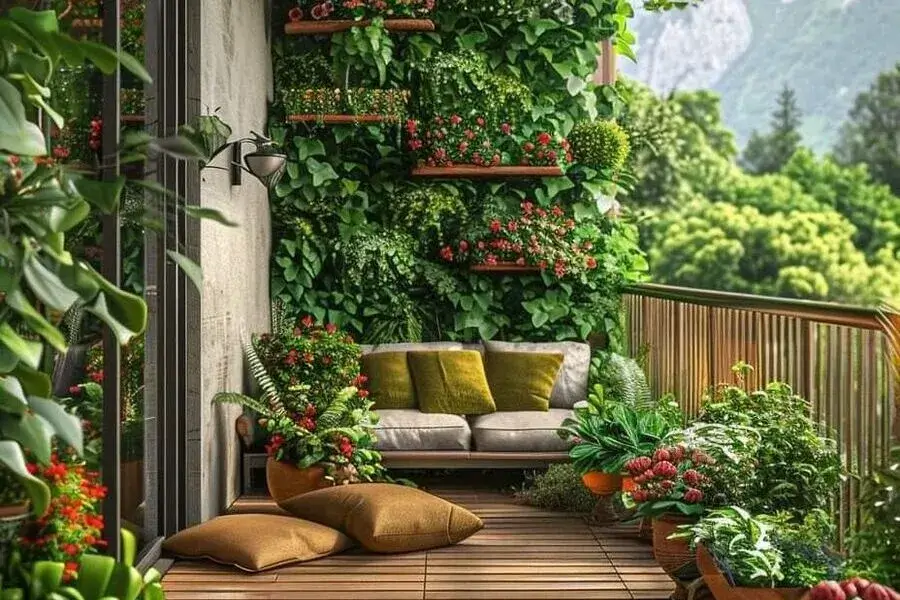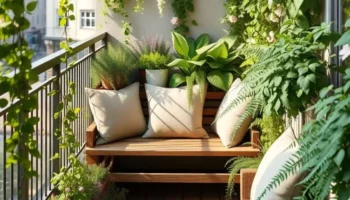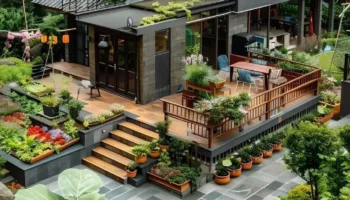Urban living often means limited space, but that does not have to stop you from cultivating your own slice of nature. A balcony garden offers a perfect solution for city dwellers looking to enjoy the beauty and benefits of plants without a yard. Whether you are interested in growing herbs, flowers, or even small vegetables, a balcony can be transformed into a lush, green oasis. With thoughtful planning and the right approach, anyone can create a thriving garden in a small space, regardless of the size of their balcony.
Then, how to have a balcony garden? Creating a balcony garden is about more than just aesthetics; it offers a peaceful retreat from the hustle and bustle of city life.
In addition to improving air quality and providing fresh produce, gardening on your balcony can enhance your well-being by fostering a connection with nature. From choosing the right plants to maximizing space, this post will help you know to start your own beautiful balcony garden.
Needs for having a balcony garden
Creating a balcony garden can be a rewarding and enjoyable way to bring greenery into your home, even with limited space. Here is a step-by-step guide to help you get started.
1. Assess your space
- Size and layout: Measure your balcony to understand how much space you have. Determine if you’ll place plants on the floor, use shelves, or hang them on walls or railings.
- Sunlight: Observe how much sunlight your balcony gets throughout the day. This will influence the types of plants you can grow. South and west-facing balconies get more direct sunlight, while north and east-facing ones get less.
- Wind exposure: If your balcony is exposed to strong winds, consider placing windbreakers like a trellis or tall plants to protect delicate plants.
2. Choose your plants
Based on your balcony’s conditions (sunlight and wind), choose plants that will thrive:
- Sunny balconies: Opt for sun-loving plants like tomatoes, peppers, herbs (basil, rosemary), succulents, or flowers like geraniums and petunias.
- Shady balconies: Choose shade-tolerant plants such as ferns, hostas, ivy, and herbs like mint or parsley.
- Edible plants: Grow vegetables like cherry tomatoes, lettuces, spinach, or small herbs. Even small fruit trees (lemon or dwarf citrus) can work.
- Climbing plants: If you have limited floor space, consider vertical gardening with climbers like jasmine, ivy, or beans, using trellises for support.
3. Pick the right containers
- Planter boxes: These are great for railing installations and can save space.
- Hanging pots: Ideal for herbs, succulents, and trailing plants like pothos or petunias.
- Vertical planters: Use shelves, stacked pots, or wall-mounted racks to maximize vertical space.
- Self-watering containers: For those who travel or may forget to water regularly, these are excellent for maintaining moisture levels.
4. Use quality soil
- Potting mix: Use a high-quality potting mix that provides good drainage. Garden soil is typically too dense for containers.
- Fertilizer: Since container plants don’t have access to nutrients like plants in the ground, regularly fertilize them with a balanced organic fertilizer.
5. Watering and drainage
- Drainage holes: Ensure all your containers have drainage holes to prevent waterlogging, which can damage the roots.
- Watering schedule: Balcony gardens often require more frequent watering than ground gardens, especially in hot or windy conditions. Check the soil regularly and water when the top inch feels dry.
- Drip irrigation: If your balcony is large, consider setting up a simple drip irrigation system for consistent watering.
6. Add decorative elements
- Furniture: A small chair or table can make your balcony garden a relaxing spot.
- Lighting: String lights, lanterns, or solar lights can enhance the atmosphere in the evenings.
- Trellises: Use these for climbing plants and to add structure and height to your garden.
- Windchimes or artwork: Personalize your space with small decorative items.
7. Pest management
- Keep an eye out for common pests like aphids, spider mites, or whiteflies. Use natural pest control methods like neem oil or introduce beneficial insects like ladybugs.
- Companion planting, like growing marigolds, can also help deter pests.
8. Maintenance
- Pruning and harvesting: Regularly trim dead leaves and harvest vegetables and herbs to encourage more growth.
- Repotting: If a plant outgrows its pot, repot it to ensure it continues to thrive.
To sum up, cultivating a balcony garden is not only a rewarding hobby but also a practical way to bring greenery into your urban living space. With careful planning, you can select the right plants that thrive in your balcony’s unique conditions, whether they receive full sun or shade. By utilizing creative container gardening techniques and maintaining a regular care routine, you can transform even the smallest balcony into a vibrant oasis. Embrace the joys of gardening, enjoy fresh herbs and vegetables at your fingertips, and create a serene retreat that enhances both your home and your well-being. Happy gardening!





